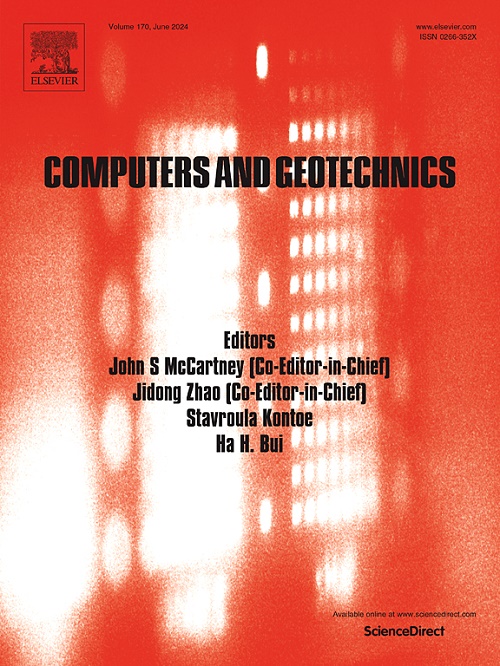The role of geogrid aperture shape and size in strengthening aeolian sands: Insights from a coupled DEM-FDM approach
IF 5.3
1区 工程技术
Q1 COMPUTER SCIENCE, INTERDISCIPLINARY APPLICATIONS
引用次数: 0
Abstract
In the design of reinforced structure, the shear strength of the reinforcement-soil interface is a key indicator of reinforcement efficacy, which is significantly influenced by the geometric characteristics of geogrids. At present, the research on how the geogrid mesh shape and aperture ratio of geogrid affect the interface shear response is not sufficient. In this study, the traditional biaxial geogrid and three new types of geogrids were selected, through the pull-out test and coupled discrete element method (DEM) and finite difference method (FDM), the influences of the arrangement of transverse ribs and the change of aperture ratio on the effect and mechanism of the reinforced-soil interface were explored. The optimal mesh shape suitable for reinforced aeolian sand and the optimal aperture size ratio under various shapes of geogrids were analyzed. Based on the analysis of the displacement, shear band distribution and porosity evolution of aeolian sand reinforced by different geogrids during the drawing process, the reinforcement effect and mechanism were revealed from the mesoscopic level. The research results provide important reference for the design of new geogrids and the reinforcement design of desert roadbeds.
求助全文
约1分钟内获得全文
求助全文
来源期刊

Computers and Geotechnics
地学-地球科学综合
CiteScore
9.10
自引率
15.10%
发文量
438
审稿时长
45 days
期刊介绍:
The use of computers is firmly established in geotechnical engineering and continues to grow rapidly in both engineering practice and academe. The development of advanced numerical techniques and constitutive modeling, in conjunction with rapid developments in computer hardware, enables problems to be tackled that were unthinkable even a few years ago. Computers and Geotechnics provides an up-to-date reference for engineers and researchers engaged in computer aided analysis and research in geotechnical engineering. The journal is intended for an expeditious dissemination of advanced computer applications across a broad range of geotechnical topics. Contributions on advances in numerical algorithms, computer implementation of new constitutive models and probabilistic methods are especially encouraged.
 求助内容:
求助内容: 应助结果提醒方式:
应助结果提醒方式:


